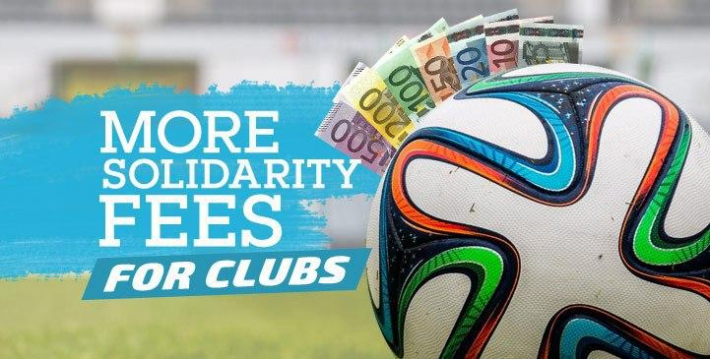The entitlement of training clubs to solidarity contributions in the event of a transfer of a professional player during a contract is laid down in the Regulations on the Status and Transfer of Players (RSTP)[1]:
'If a professional is transferred before the expiry of his contract, any club that has contributed to his education and training shall receive a proportion of the compensation paid to his former club (solidarity contribution). The provisions concerning solidarity contributions are set out in Annexe 5 of these regulations.
The scope of this provision was limited to international transfers as shown in the Commentary on the RSTP[2]:
‘The provisions on solidarity contribution apply only in the event of a player transferring from a club affiliated to one association to another club affiliated to another association (i.e. international transfers). If the player transfers between two clubs affiliated to the same association, the solidarity contribution is not applicable unless the association concerned has included a clear clause in its own regulations, acknowledging the obligation to pay a solidarity contribution as a consequence of domestic transfers.’
How does this work out for clubs? Let’s explain it with a sample without going into the details of how high the fee is:
- The 18-year-old Ghanaian player P is transferred from Ghanain club GA’ to Ghanaian club GB. In this case, only domestic regulations apply.
- After one year club GB sells the now 19-year-old P to the Belgium Club BA. This is an international transfer and club BA has to withhold a Solidarity fee from the transfer sum and pay a solidarity fee to the Ghanaian clubs GA and GB. Both Ghanaian clubs have a claim on the Belgium club BA.
- After again one year the Belgium Club BA sells the now 20-year-old player P to the Belgium Club BB. This is a domestic transfer from one club in Belgium to another club in Belgium and FIFA’s solidarity mechanism does not apply as has been explained above.
- After again one year the Belgium club BB sells the now 21-year-old player P to the Dutch club DA. This is again an international transfer and the Ghanaian clubs GA and GB, as well as the Belgium club BA, are entitled to a solidarity fee.
What we see in this example is that training clubs miss out on domestic transfers that take place in a foreign country. (See the transfer of P from club BA to BB) This is now corrected. Per 1 July 2020, a solidarity contribution is due[3]:
’ if a professional player is transferred, either on a definitive or loan basis, between clubs affiliated to the same association, provided that the training club is affiliated to a different association.’
Although training clubs often focus on collecting training compensation it is the solidarity mechanism that generates more income. In 2019, clubs declared a total of USD 63.3 million in solidarity contribution against a total of 12.2 million in training compensation. The solidarity mechanism creates far bigger revenues for clubs than the training compensation system and this gap will most likely only grow per 1 July 2020.










